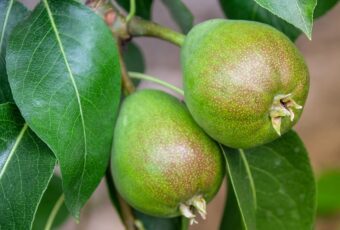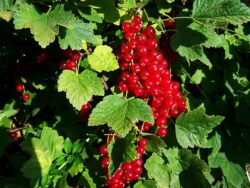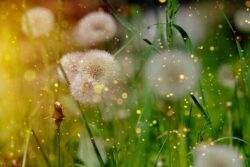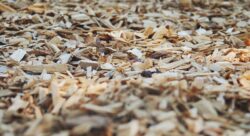In this article, we will discover what to do once your fruit trees and fruit bushes have been planted. Once you have planted your fruit trees, fruit bushes and canes you cannot rest on your laurels, as still there is plenty to do.

After all, that time spent in planting them, staking them, tying them in, it is now time to look after the plant, as you cannot let them grow by themselves.
The most important routine that you must get right is to how to water and feed effectively, as well as how to control weeds.
GET THE WATERING RIGHT
All newly planted fruit trees, shrubs and canes need to be watered frequently until it has become established. If you are watering right the plant will start to grow more rapidly. It could take a couple of months for most types, but this is depending on when you planted it. Autumn planted fruit trees and bushes should be established by spring and should not need any extra care.
The only care that will be needed is extra watering when draughts are happening.
Conversely, plant planted in spring or later will need to be watered throughout the growing season as it can take that long to establish. Water much more if a dry spell is forecasted. After this, you can water less but you will need to still water them.

Strawberries have shallow roots and will suffer in dry spells even in early spring. So water two or three times weekly when it is dry.
Cane fruits, rhubarb, bush fruits and dwarf fruit trees only need watering once a week during prolong dry weather.
Trees can cope with drought and only need watering if it is suffering. If this occurs frequently, you will need to find what is causing this from overhanging shrub to grasses and weeds choking the trunk. You can apply mulch in spring to reduce the amount of water lost to the atmosphere and help you to water less.
FERTILIZING
If you want a really good crop, you will need to feed your trees, shrubs and canes. If you do not feed your plants, you will not get enough new growth and fruit production. The more you look after a fruit plant, the more likely it will reward you.
In early spring, you have multiple options as to what type of fertilizer you will use. You can use a slow-release fertilizer that is added to the compost or soil in the form of special pellets. These will slowly break down releasing the nutrients that the plant needs slowly.
Alternatively, you can add general-purpose fertilizers such as growmore or fish, blood or bone that has nitrogen, phosphorous and potassium in equal quantities. As with the slow-release fertilizer, you will need to rake them into the soil each spring as a means of a quick pick –me –up. Always follow the instructions written on the box or container to avoid disappointment.
ADD SOME SULPHATE OF POTASH
What I would do is add some sulphate of potash in early spring to the slow-release fertilizer or general-purpose fertilizer, as this will encourage more flowering and fruiting.

Slow-release fertilizers are good for the growing season, but fruit trees and bushes can benefit with an occasional pick me up. If your plant is sluggish throughout the season. You can use a water-soluble fertilizer in either powder or liquid form. Phostrogen is ideal.
You can use a seaweed extract that is high in nitrogen and trace elements, as a great additional tonic, especially so used as a foliar feed. Another option, you can use is tomato fertilizer that offers a good source of potassium and magnesium.
Fish emulsion that has little potash, but some nitrogen and low phosphorous, can act as a quick-acting fertiliser for fruit bushes when they need it the most at the beginning of the growing season.
WEED KILLER
Even shrubs and trees grown in containers will need to be weeded. You may think that they are tough and a few weeds around them will not hurt them. This is not the case as these bloodsuckers will take water, nutrients, light and space from your fruit plants. They also harbour pests and diseases, so it is advised to remove them once seen.
It is best to hoe or dig out any annual weeds as soon as they are observed. Perennial plants will need more effort, but they should still be easy to remove. Be careful when you are hoeing around strawberries, as it is easy to damage plants with a careless slip. You will need to check regularly to make sure perennials weeds do not emerge again and start competing with your fruit plants.
It is not recommended to use weed killers to kill weeds in containers, as it is likely to kill the fruit bushes in the process. Not suitable for those who like to garden organically.
USE MULCHES TO STOP WEEDS GROWING
A way around weeding is to use mulches, as they will keep weeds down as well as retain moisture. Weeds will grow in the mulches, but they do not tend to root deeply, so they are much easier to remove.

The compost needs to be moist before you spread the mulch over, as besides inhibiting the weeds, it will also help out to retain moisture at the roots.
Each spring, remove any weeds that have germinated around the base of the plant. Water well when the weather is dry and feeds in early spring, then apply a layer of mulching material over all the compost. Well-rotted manure or garden composts are the best, but you can use bark chipping. This will rot down slowly and some extra nutrients will be supplied to the fruit trees and bushes.
It should be mulched from early February to mid-March when the tree and bushes start coming into bud or flowers, so there is less risk of damaging new growth as you work
Strawberries are mulched differently. They should not be deeply mulched as this will encourage moulds and rots as well as hiding slugs and snails. There are several ways to keep weeds and pests down, whilst preventing the fruits from rotting.
You can use synthetic strawberry mulch mats that protect the plants from soil and rain splashes. They also increase the temperature of the soil, retain moisture and deter slugs.
Alternative, you can use straw and place it under and around the plant as soon as the flowers are over and the fruits are forming.
CONCLUSIONS
In this article, we have talked about how to maintain fruit tree and bushes once you have planted them. They will need to be watered at the right time, fed with the right fertiliser at the right time and that it needs to be weeded regularly.
You can add much to reduce the need to weed and to reduce the amount it will need to be watered. Fruit trees, bushes and canes do not need much in the way of looking after, but it does not mean that they can be neglected.
If you follow what I suggest you cannot go wrong, If you have any question or comments that you wish to make on this topic, please do so in the comment box below.
Look after your fruit trees and shrubs well.
